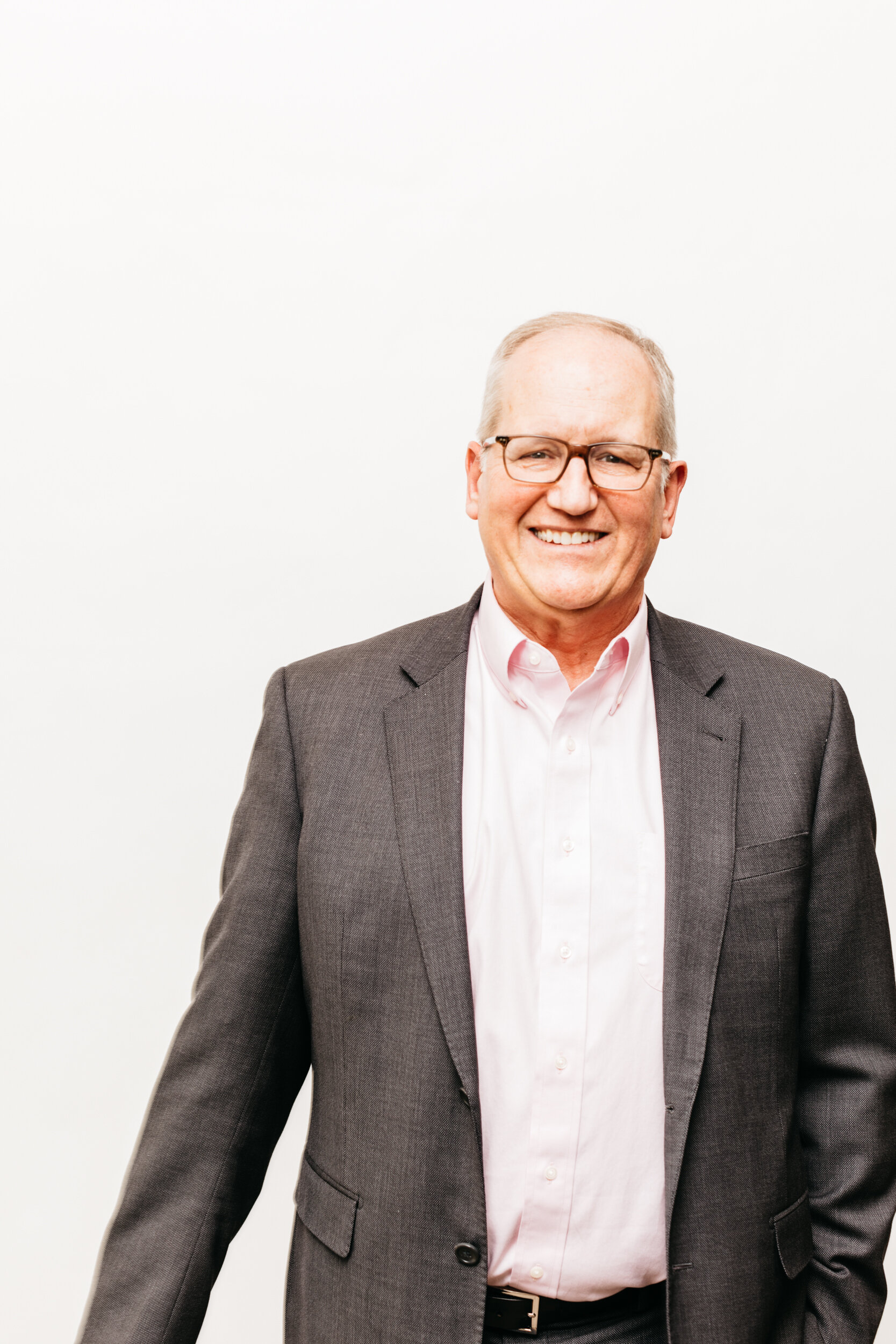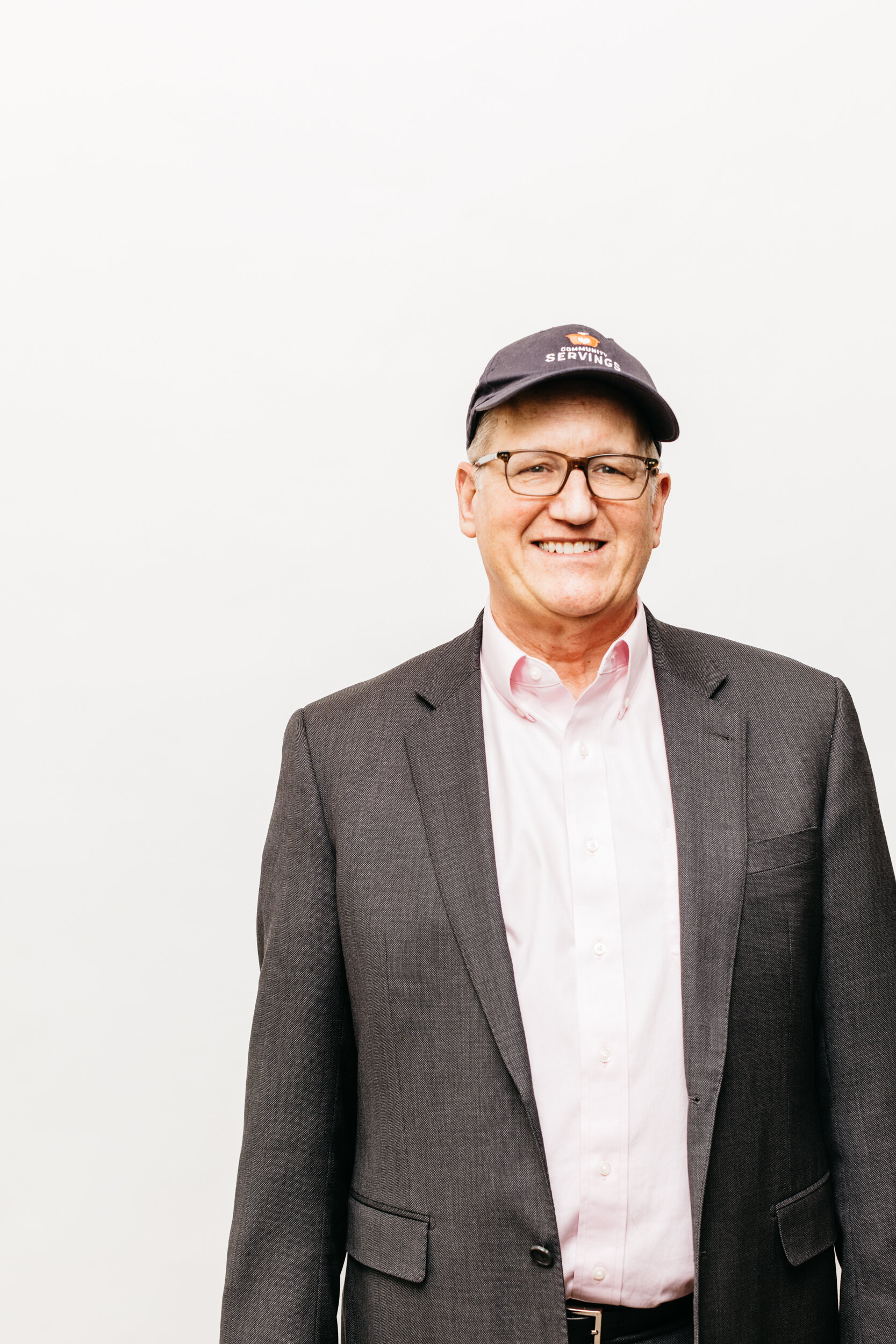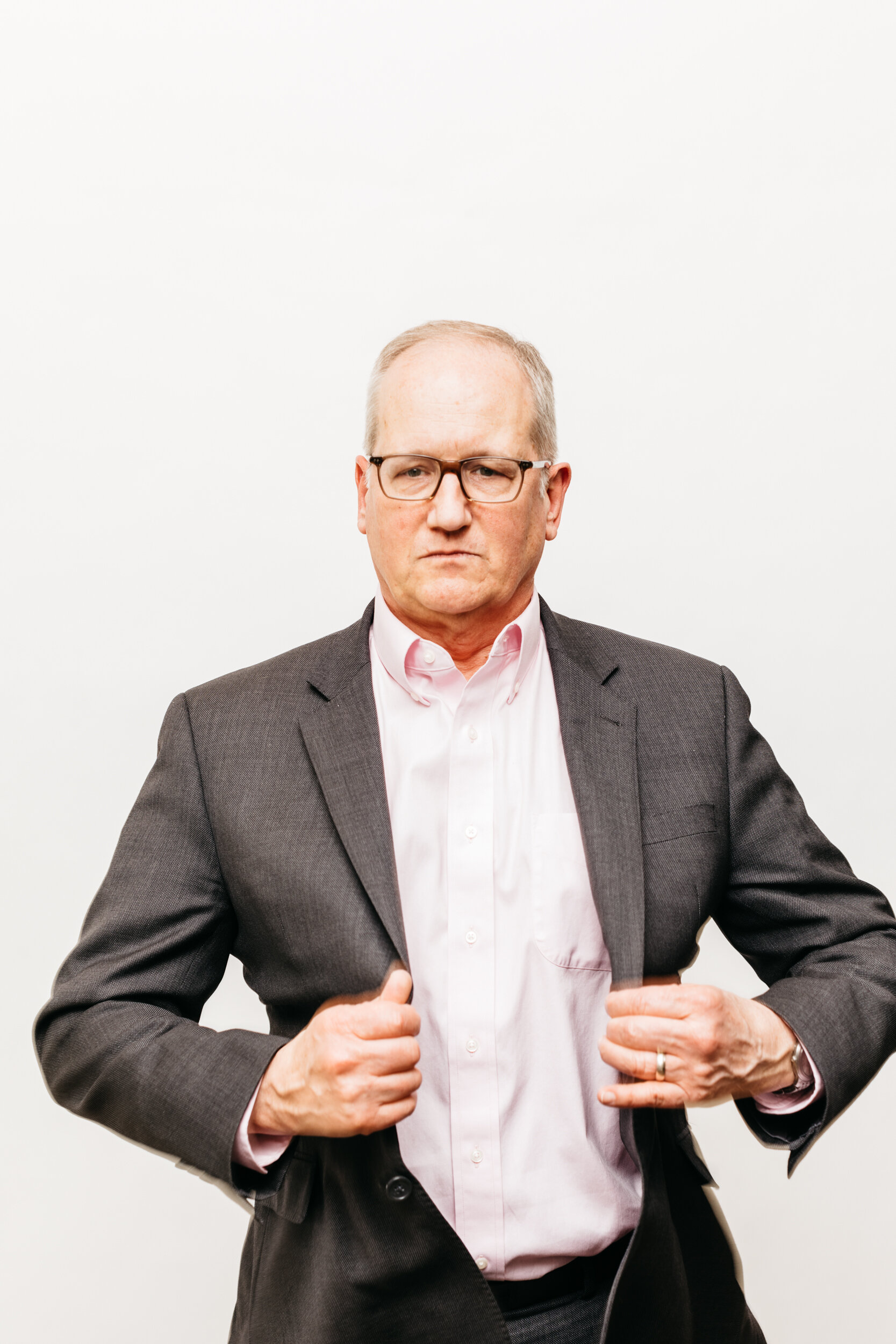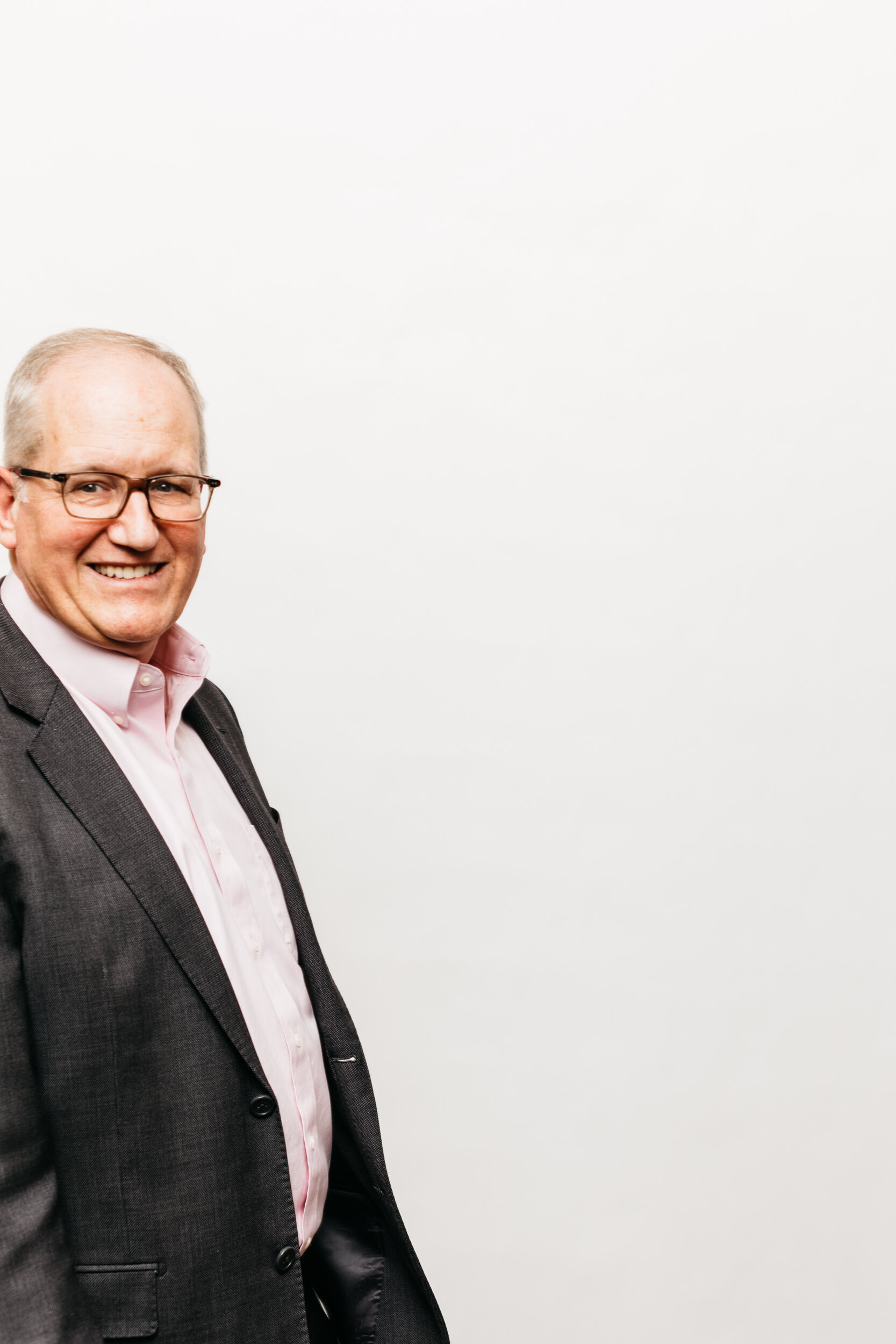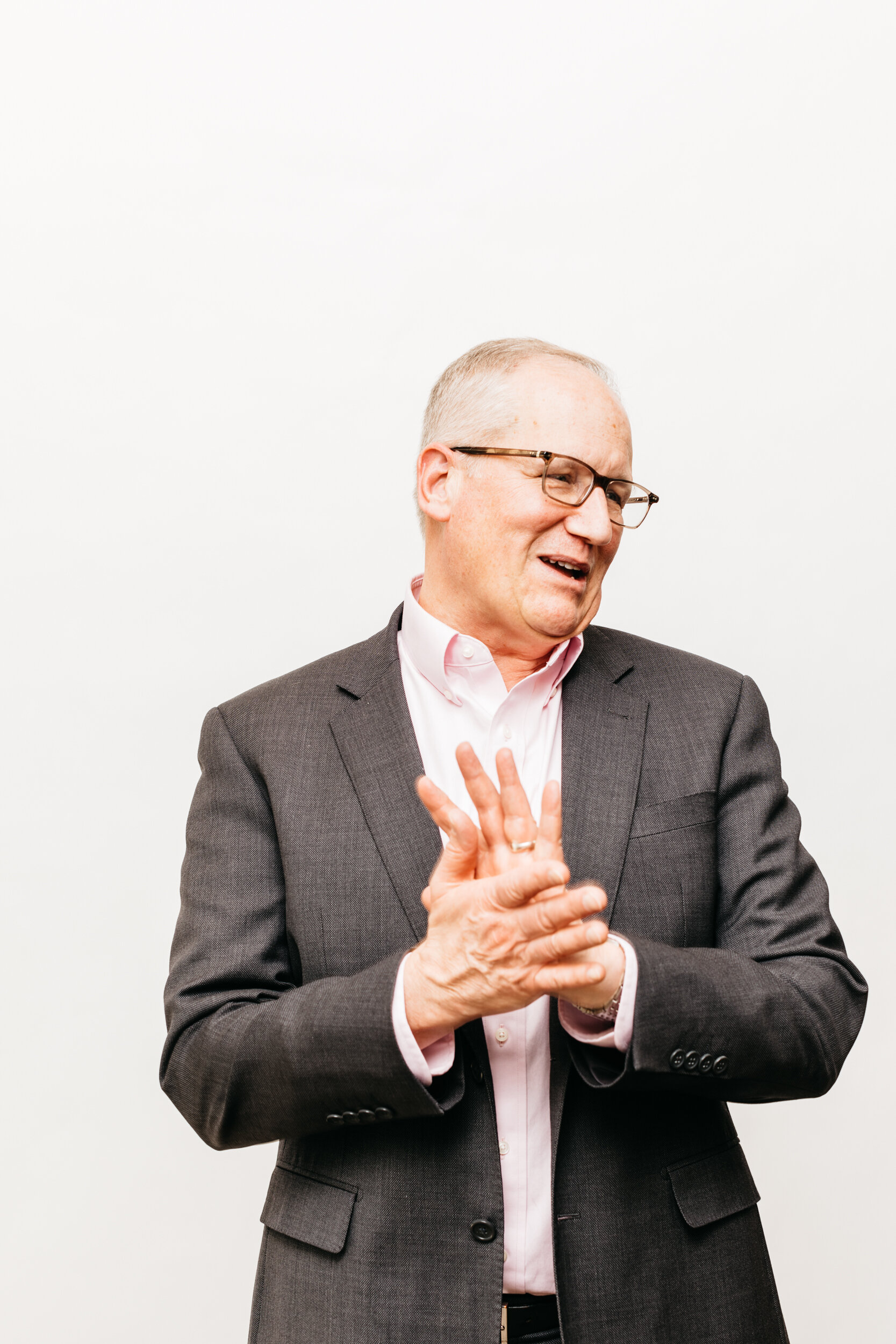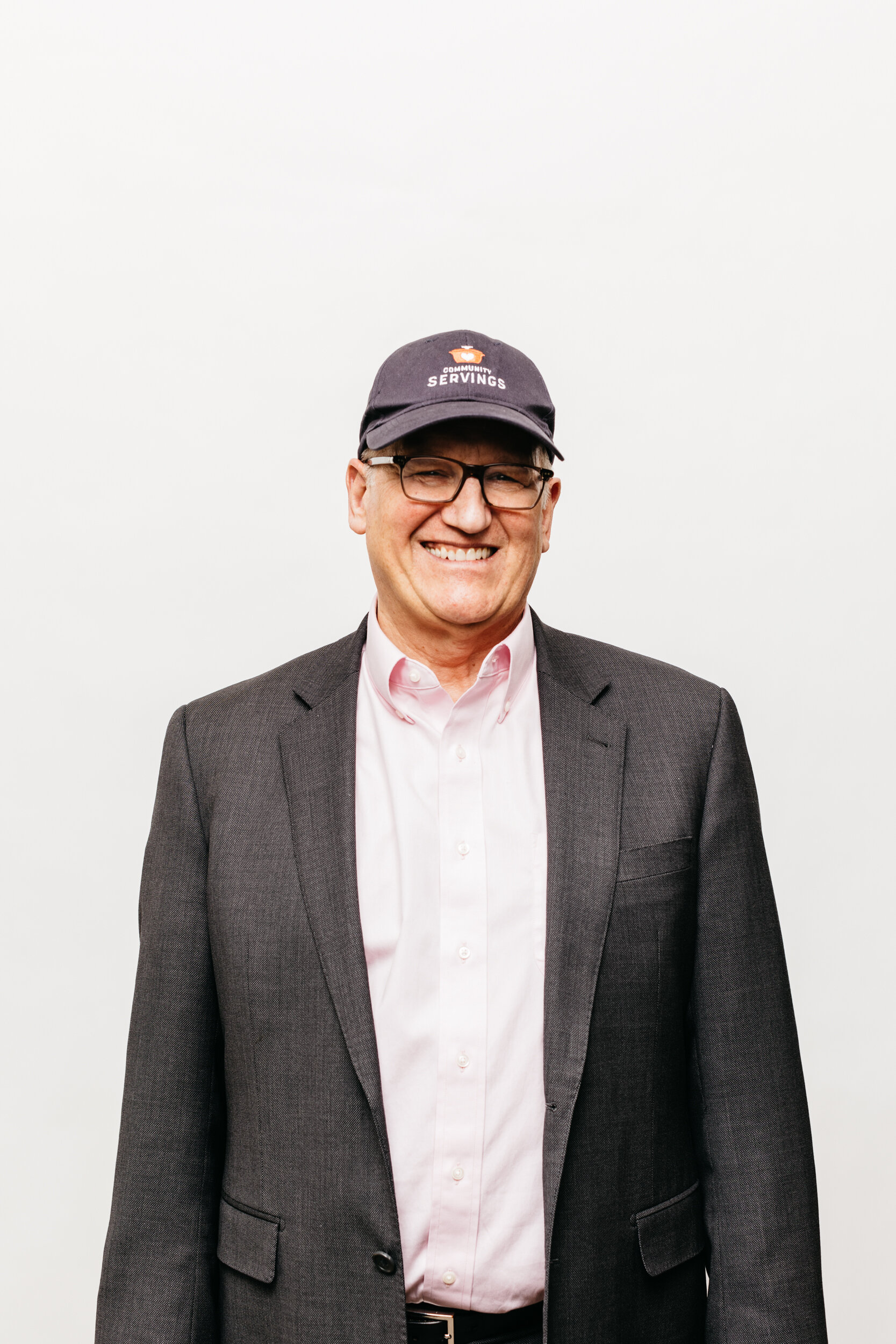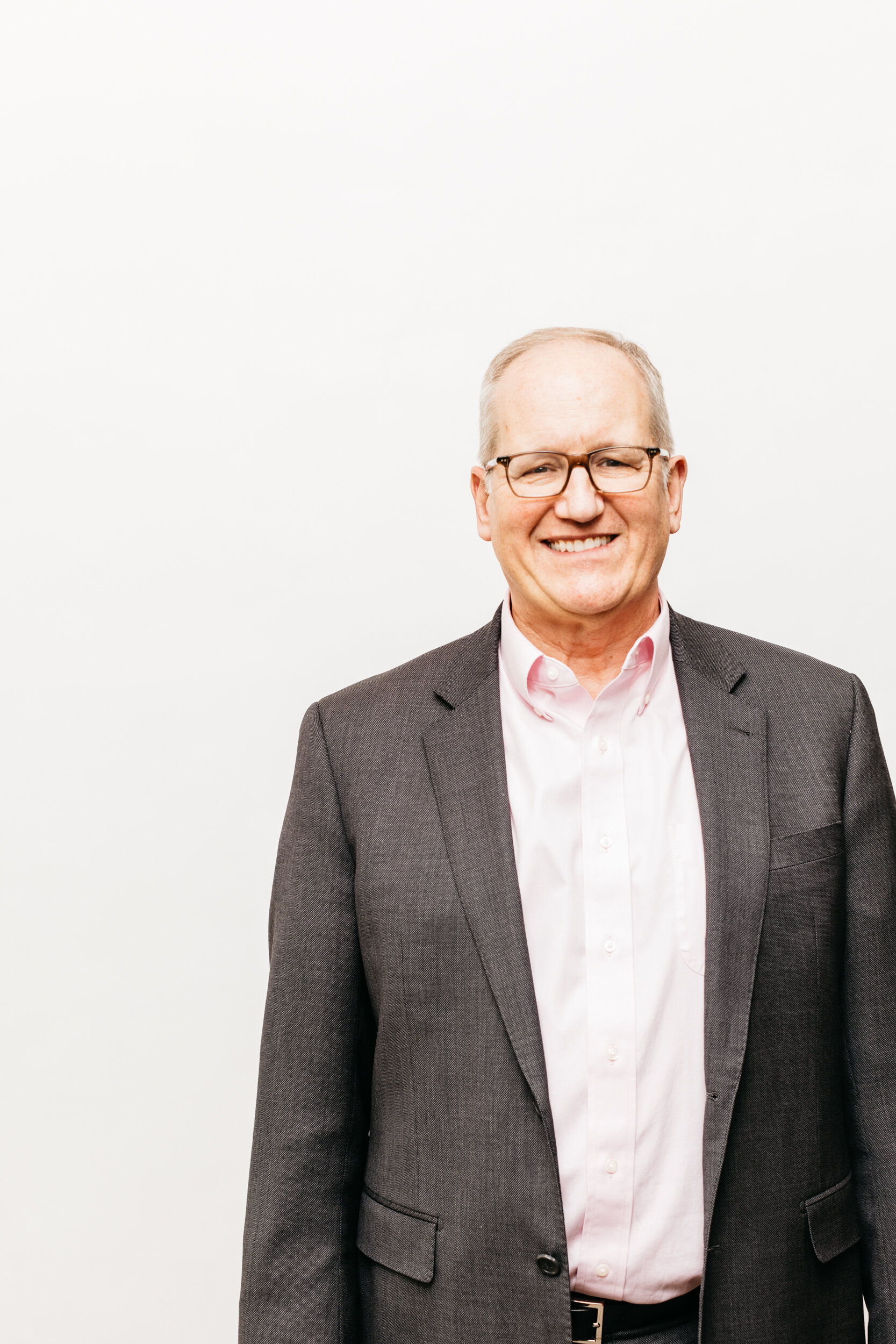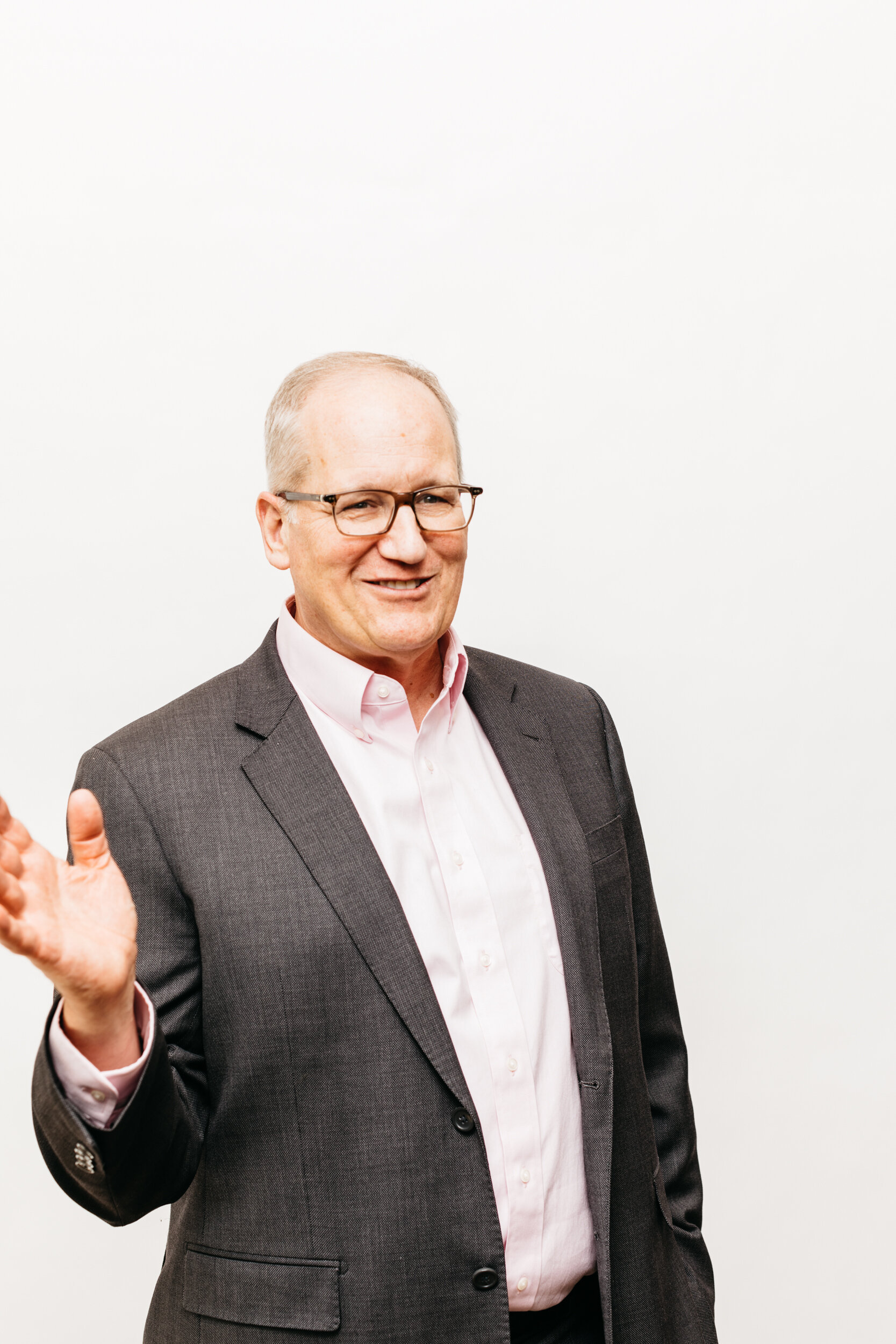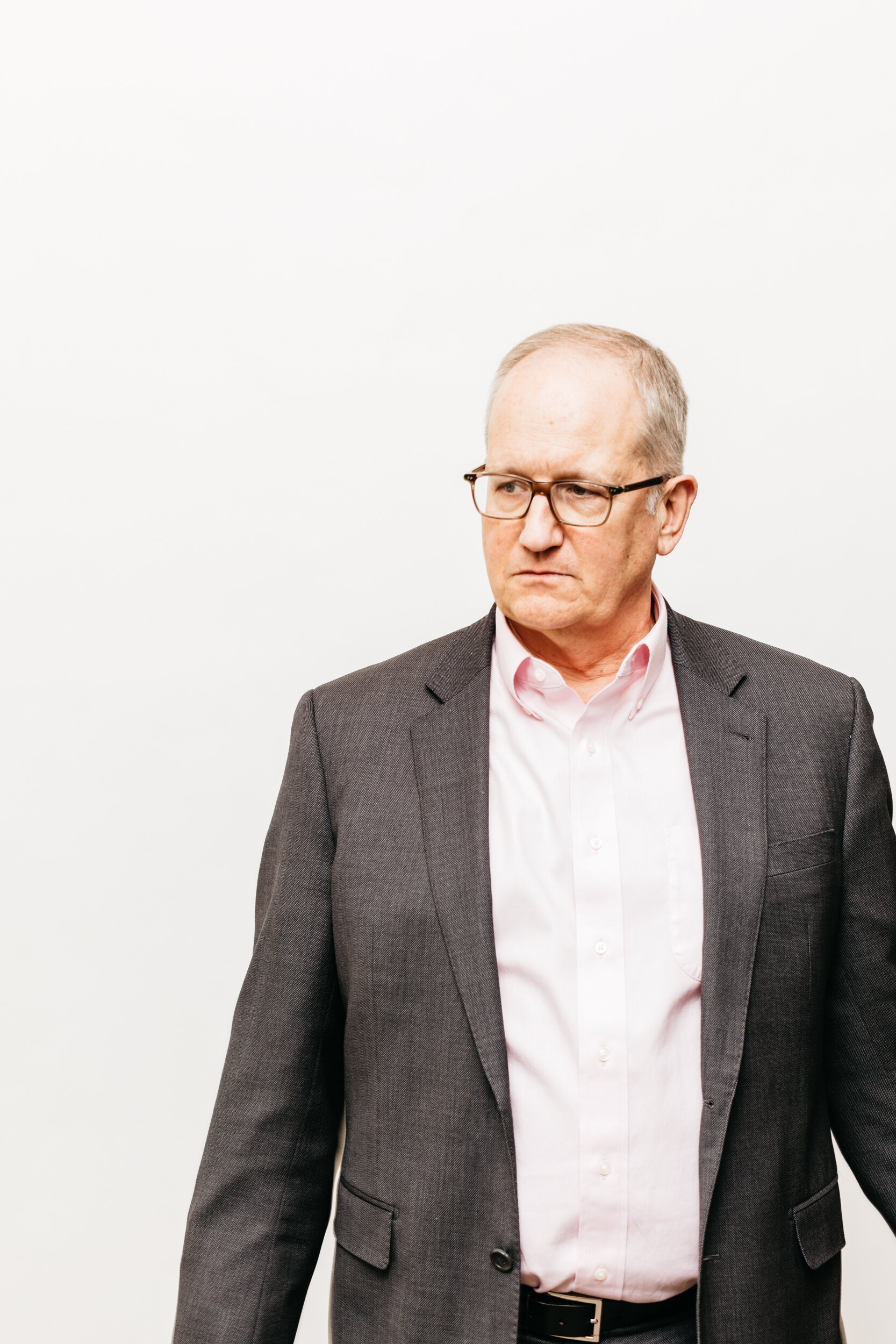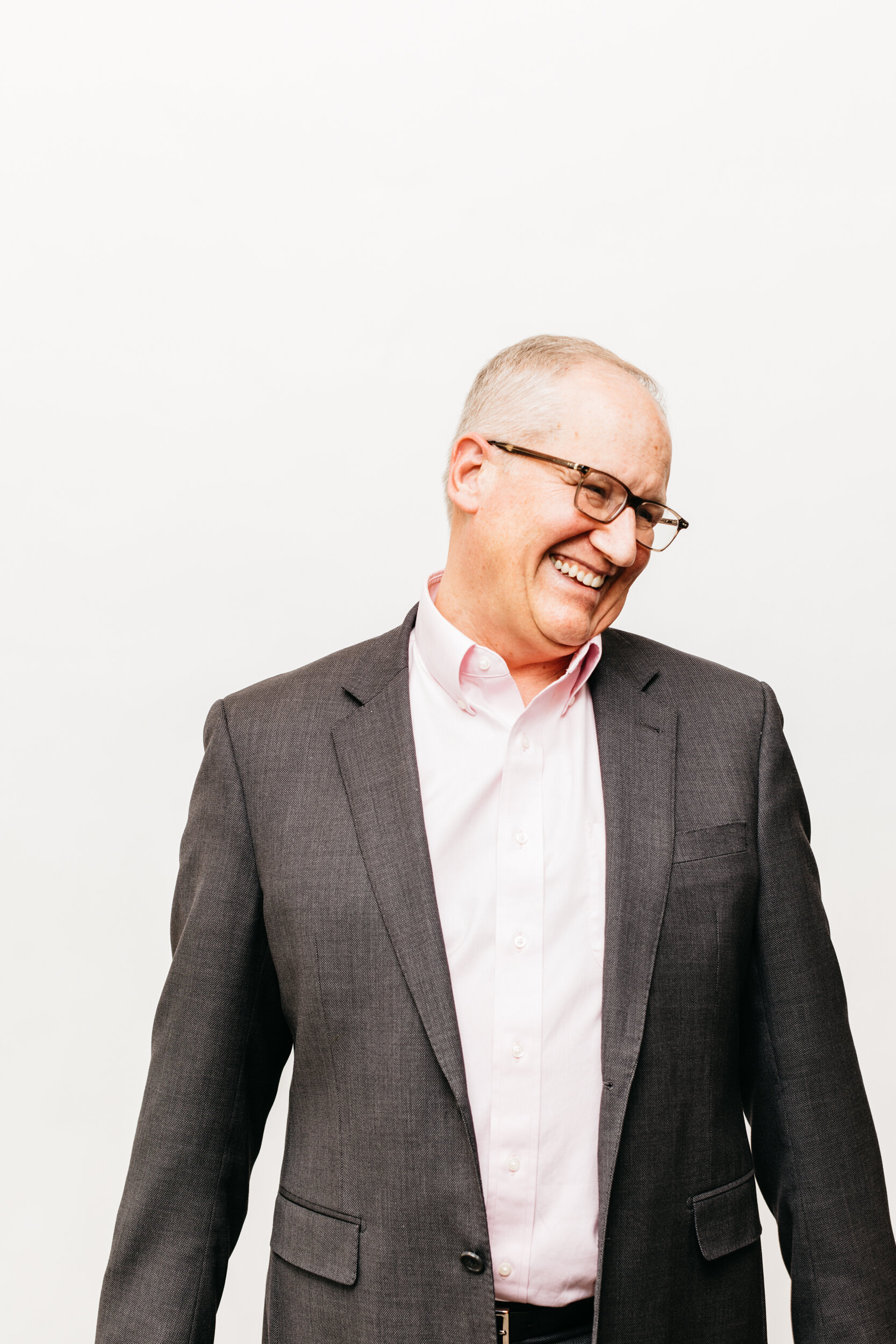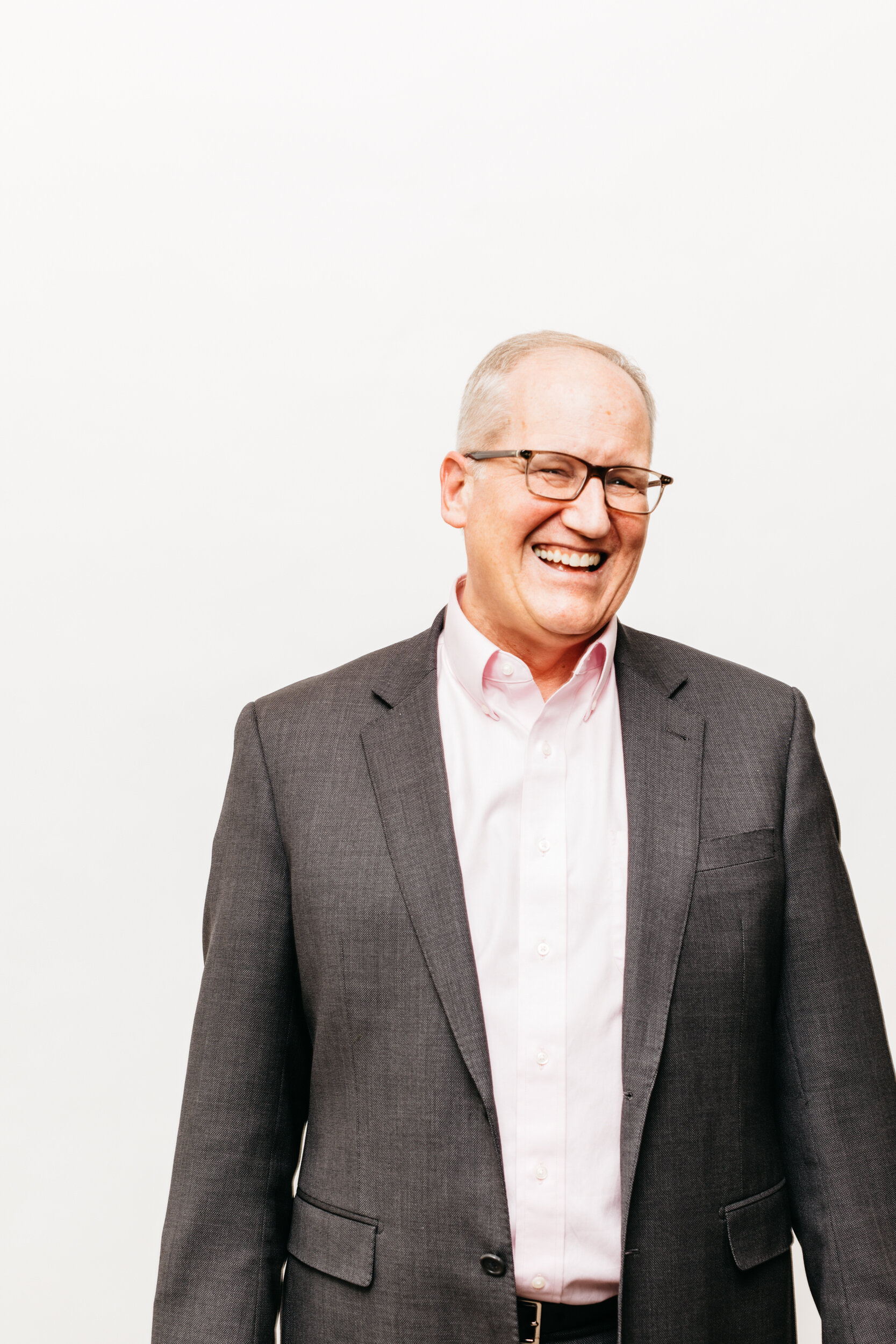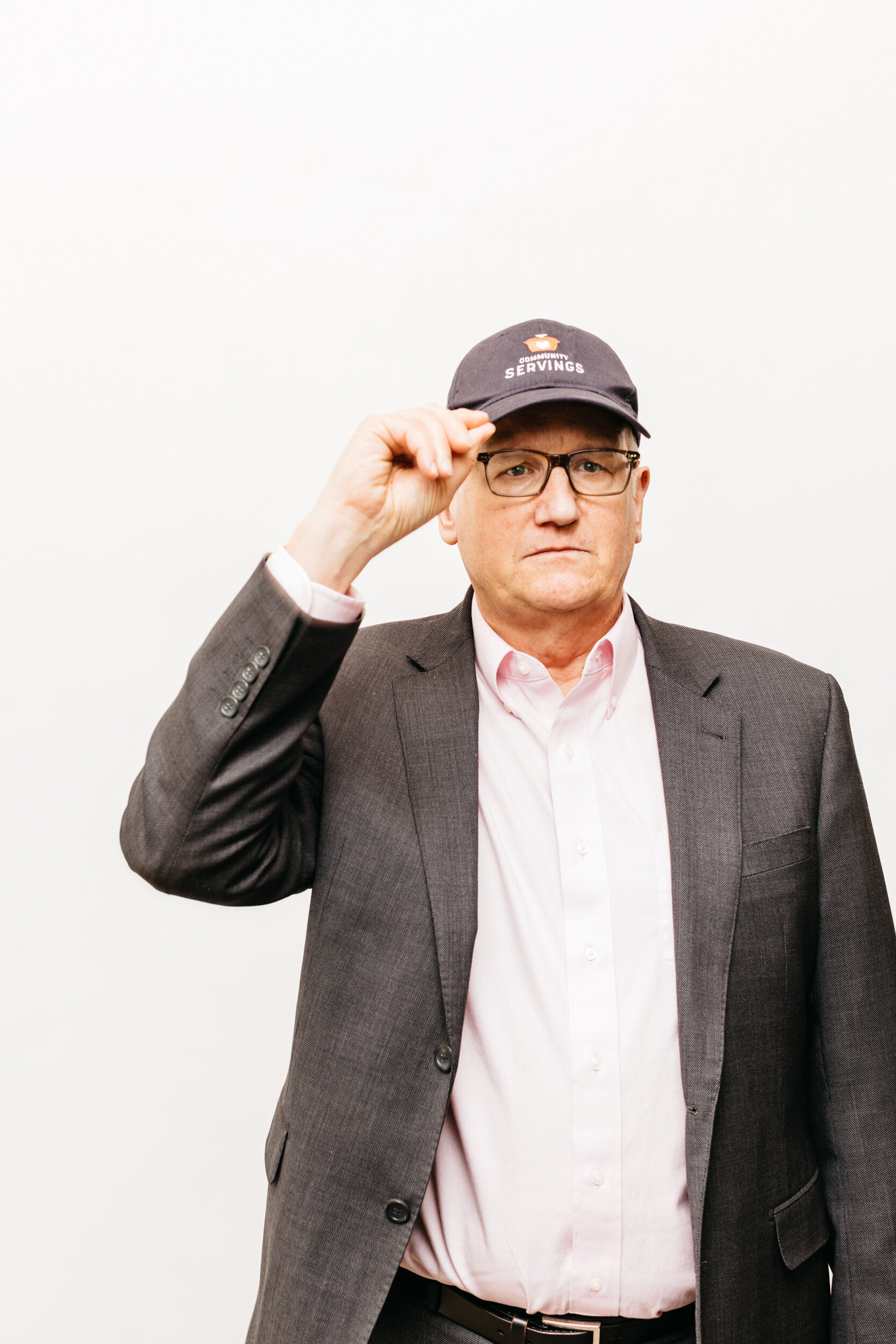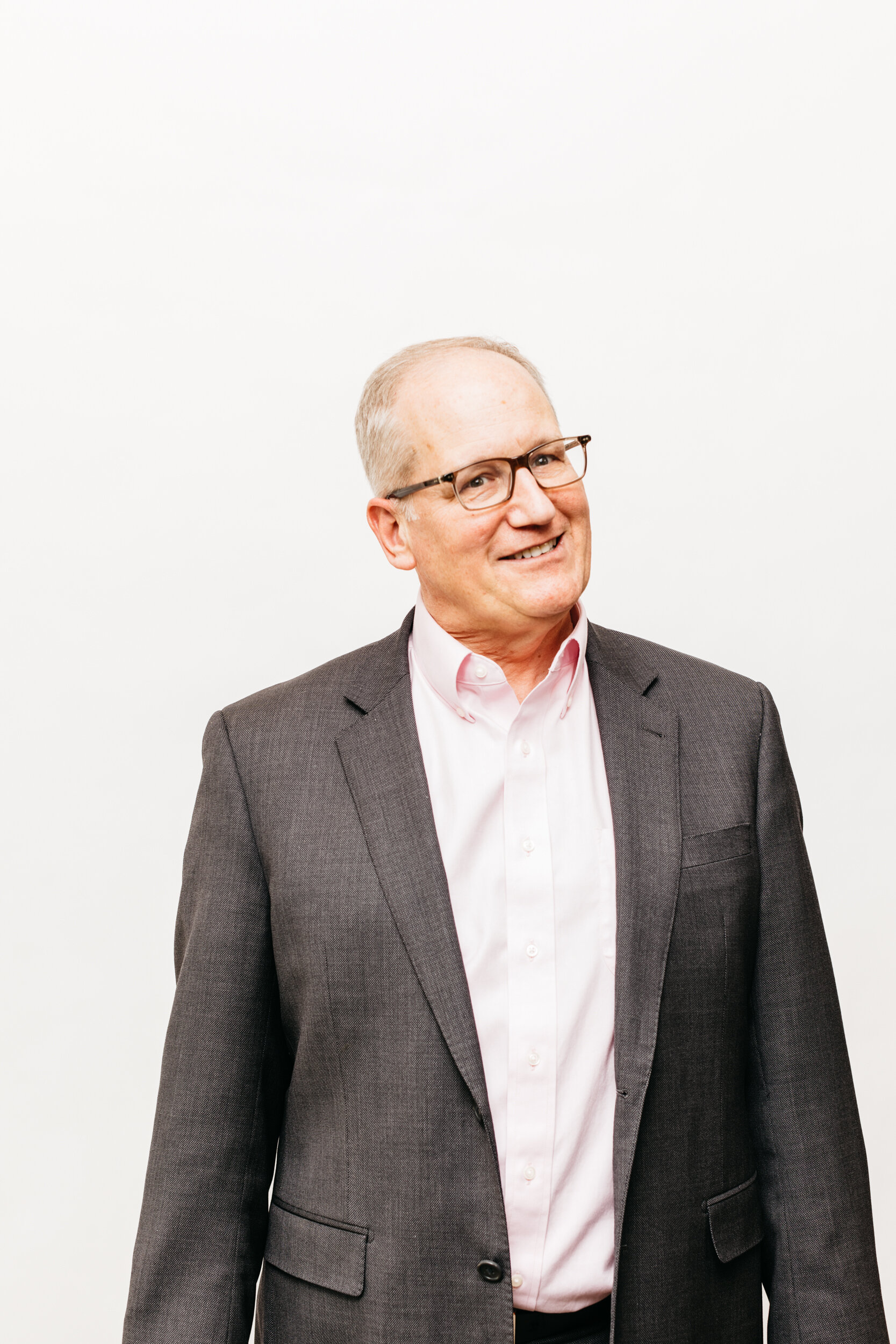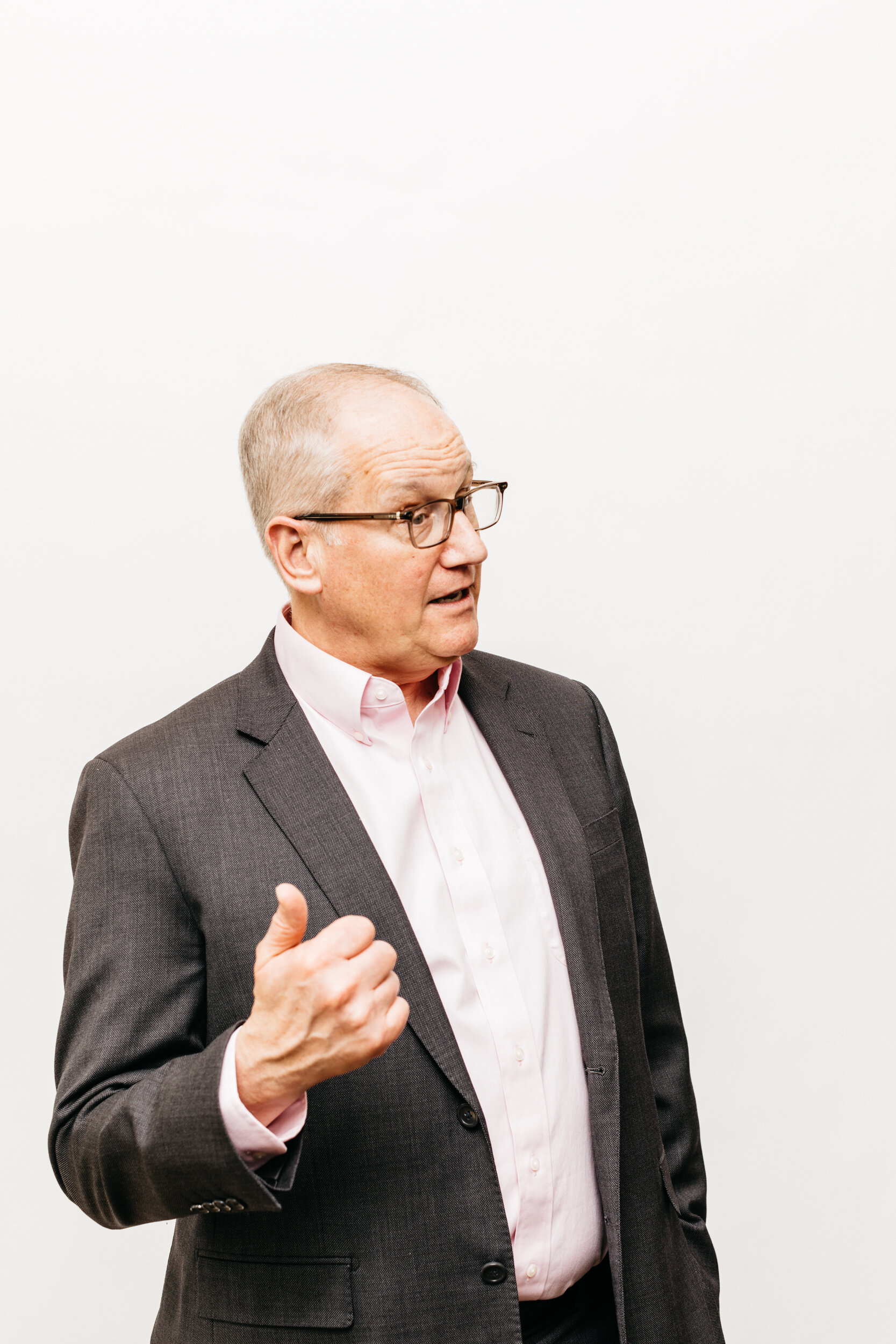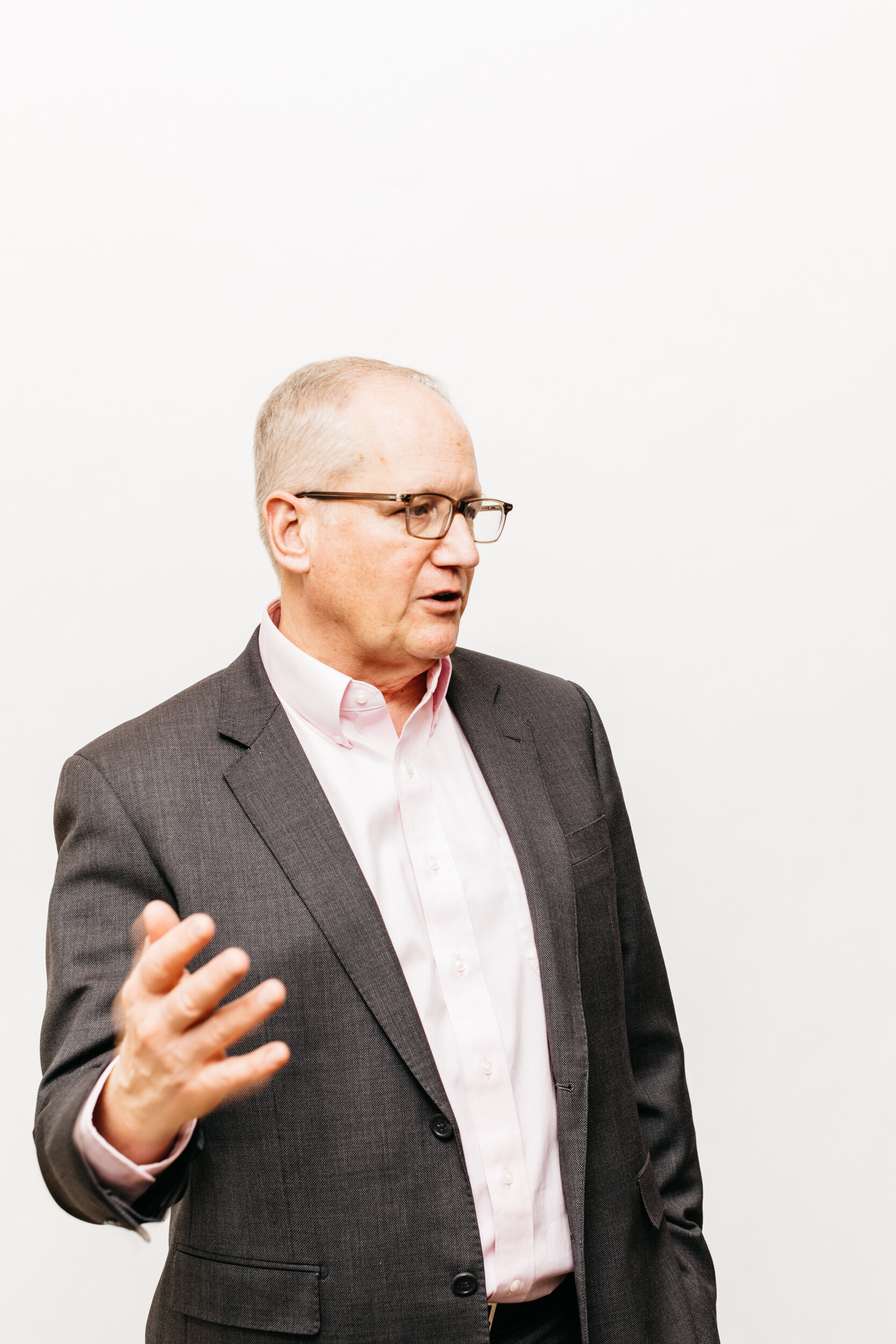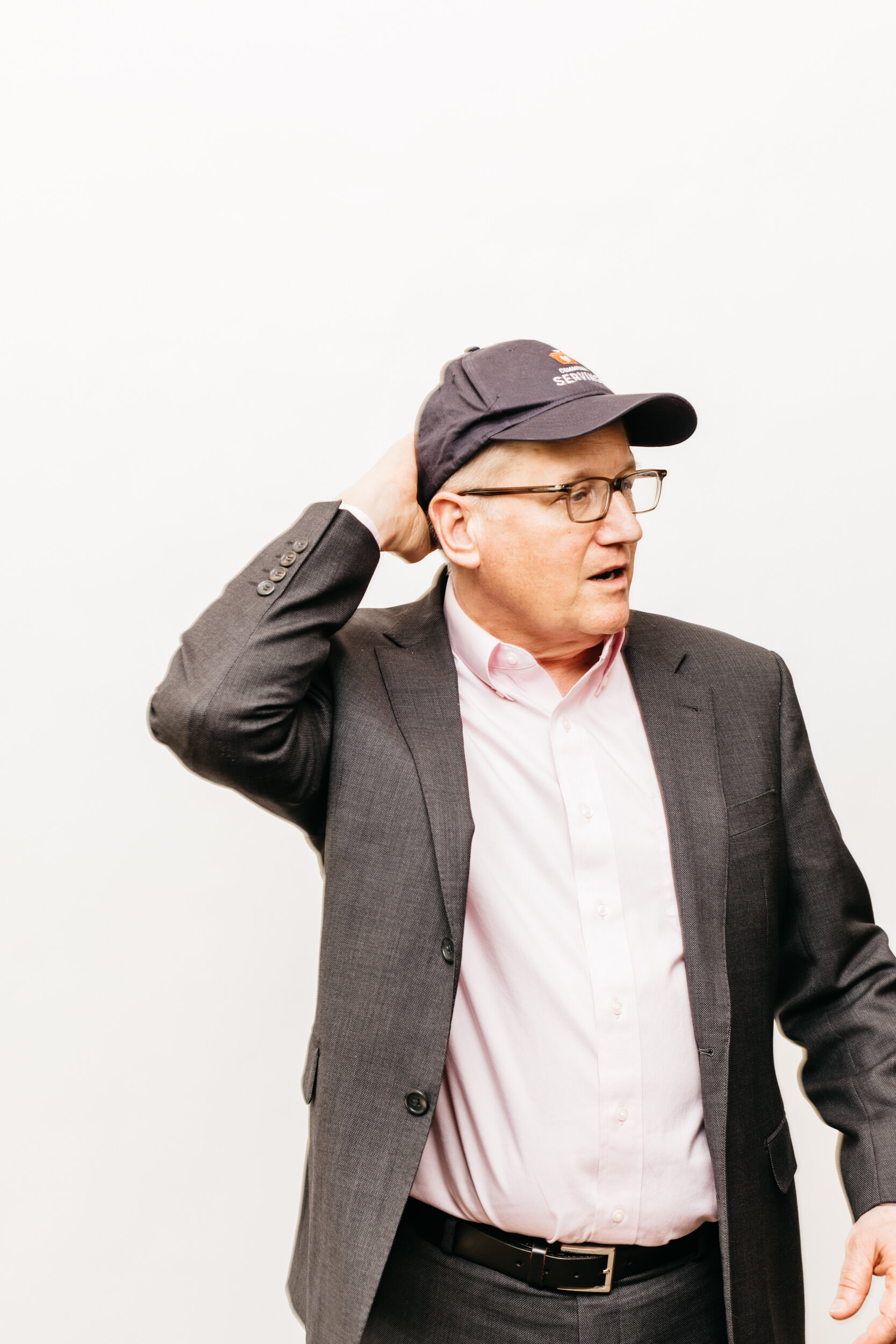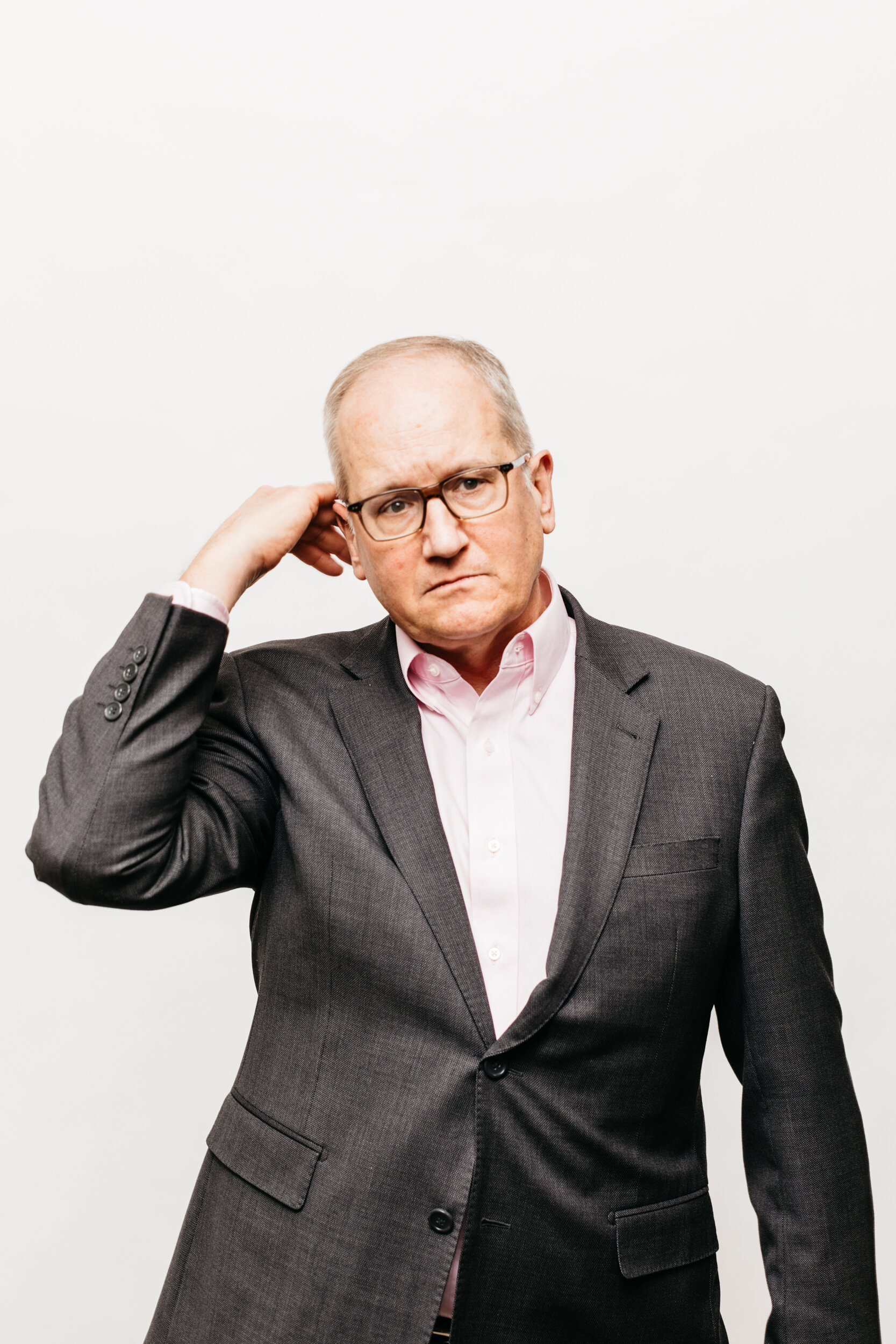Q+A: David B. Waters
Photos by Michael Piazza
This year, David B. Waters marks 20 years as CEO of Community Servings, the remarkable program that annually provides meals for 2,000 individuals and families living with chronic or critical illnesses who are unable to feed themselves. Waters became part of Community Servings in its beginnings as an AIDS Action program, first as a volunteer and then a board member before heading the organization. As he looks back on two decades, he marvels at its progress and plans for the future. For a self-described “generalist” who started out supporting dreams of fiction-writing with restaurant work at Upstairs at the Pudding and elsewhere, Waters views running Community Servings as a little like running a small business. Now housed in a sprawling new building in Jamaica Plain, Community Servings includes tailored food preparation, volunteer opportunities, nutrition classes and culinary job training and is set to offer its services statewide next year. The meals are all made from scratch by staff and many volunteers. The ingredients—both purchased and donated—include locally raised meats, local fish and fruits and vegetables from area farms, farmers markets and groceries. For a self-described “generalist” who started out supporting dreams of fiction-writing with restaurant work at Upstairs at the Pudding and elsewhere, Waters views running Community Servings as a little like running a small business—one where the goal is always serving good, healthy food.
EDIBLE BOSTON: Twenty years? Did it go by in a flash or in starts and stops?
DAVID B. WATERS: It seems like yesterday in some ways. And then you take something so small and look at what it’s grown into in complexity, sophistication and impact now, and it’s incredibly gratifying. I come to it as a social entrepreneur. Aside from the gratification of the mission, I love the sort of intellectual puzzle of how you make it all work. As a generalist, I get to work with amazing people in all the aspects of Community Servings.
EB: Tell us how Community Servings started and how it evolved into what it is now.
DBW: Community Servings was originally the Jewish community’s response to the AIDS crisis in Boston, founded by the American Jewish Congress. What most people don’t know is that in the early years of the epidemic, the majority of people actually were dying of malnutrition, what’s called AIDS wasting syndrome. There were no drugs then [to combat HIV], so food was the only intervention. We think of it as the first example of food as medicine.
Later we realized what was relevant for somebody with HIV was also relevant for those with breast cancer or somebody with cancer plus kidney failure or heart disease.
In 2004 we expanded beyond HIV. Now we feed people with about 35 different primary diagnoses. The majority of patients—70%—have more than one illness and more than one dietary restriction. So we need not only to provide the correct medical diet, but we need to be able to cross-prescribe multiple diets. And that’s really what sets us apart [from other feeding programs].
We can we use food almost like a prescription. It’s tailored in multiple ways so it becomes just like what your pharmacist is doing in terms of tailoring to your particular health care needs.
And that level of complexity and rigor is, I think, exciting and relatively unique.
One of the basic assumptions about large-scale feeding programs is that the food is expected to be mediocre—not because of poor intent or lack of commitment, but because the resources aren’t there. When you’re feeding sick individuals, the first thing they lose is their appetite. Our first challenge is how do we motivate them [to eat] and that starts with beautiful food. We’re really focused on scratch cooking, local ingredients, slow cooking.
EB: I’ve read about the Food as Medicine initiative and your part in getting insurance companies and others involved in supporting healthy food to high-risk patients. Can you tell us about that?
DBW: Originally this organization was funded through government contracts for HIV programs. But there’s no similar government funding that feeds the sick. Funds raised through philanthropy cannot cover the need— there’s always a waiting list.
So about five years ago, we started going to health care leaders and saying, “You know what we’re doing is not really just hunger work—it’s really health care.” As a group, they said, “Well, that’s great but you have to prove ROI [return on investment] for us to reimburse you.”
Rather than be intimidated by that, we set out to do the research to look at just what was the impact. With Dr. Seth Berkowitz, then at Massachusetts General Hospital, we did retrospective claim data studies to see what patients’ medical costs were while we were feeding them. What we saw was a 16% cost savings [in terms of hospitalization, emergency room and other costs].
We feed what are called high-cost, high-need patients— the old adage is that 5% of the population takes 50% of the health care dollars. When you say you can save 16% on that population, it’s a big number and very attractive to health care providers struggling with costs.
We currently have a Medicare Advantage contract and a contract serving the dual eligible population [Medicare/ Medicaid]. We also have a couple of home hospital contracts. We are currently negotiating six additional contracts with Massachusetts health systems. That will allow us to double the number of people we’re feeding overthe next year. It’s really exciting if you think of it from a food and anti-hunger perspective.
In America, we’ve tried philanthropy and government programs, but we haven’t really tried capitalism. And what I think is exciting about the research is that we’re showing whether you do this based on your value system, or purely on a profit motive, it makes sense to feed low-income sick people.
EB: How does someone get on your list?
DBW: Typically, you’re being referred by a doctor or care manager. They are sharing basic medical information with us; we see your illness, your diagnosis, your labs and what are called “activities of daily living.” From that we determine if you need our service, and then a registered dietician and/or nutritionist prescribes a diet, based on your medical requirements.
EB: Is the fact that you’ve got these contracts part of the movement to keep people out of nursing homes, hospitals, emergency rooms?
DBW: Yes, if we’re feeding a patient, we see a 49% drop in hospitalizations, and a 72% reduction in referrals to skilled nursing facilities. As you might know, through the Affordable Care Act, hospitals are penalized for rehospitalizations [when a patient returns to the hospital repeatedly]. One of my favorite client stories is a woman with diabetes. Before she was on our program, once a month—typically when she ran out of food stamps—her blood sugar would go out of whack and she would call 911. The ambulance would come and pick her up and take her to the emergency room where they would stabilize her and send her home. That’s incredibly expensive. After she got into our meals program, she never called 911 in six months.
EB: In a society that sometimes mistrusts or discounts those who live in poverty or in need, how do you feel about those you serve?
DBW: I started my career in restaurants. I think that food is such a powerful social engager, whether it’s sitting down to break bread with each other, having foods from your own culture or food memories that give us a sense of safety and solace. I’m just particularly intrigued with the idea of how we bring the same caliber of food—not fancy but good, high-quality food—to low-income sick patients as we like to enjoy in our best restaurants in Boston. Because why should they [patients] get less?
You never want to disrespect the customer in restaurants. It’s important that you never lose that sense of respect while serving someone who’s sick and maybe dying. That would be a tremendous tragedy. We think of food as a gift from the community to those we serve. And we all do this together. I can’t do it by myself or even with our staff. But along with volunteers and donors, we can look out for those who don’t have family or networks to support them at the scariest time of their lives.
EB: In November Community Servings dedicated a new building in Jamaica Plain. Tell us about it.
DBW: Having this brand-new building establishes us with a more physical presence to not only double, and eventually triple, the number of people we feed, but also do job training and nutrition education [for the community]. This was a $25-million project funded by the community of Boston as a whole and public sources, like tax credits.
EB: The job training program—how does it work?
DBW: We’ve always had volunteers with challenging backgrounds themselves, from addiction recovery or court-release programs. And over the years we’ve hired a lot of those people because they were good workers. And it’s through osmosis that the idea of a second chances got baked into our DNA. The job training program was an outgrowth of that. It’s a 12-week program where we teach people how to work in food service: cooking skills, how to be in a large industrial kitchen, but also job readiness skills, interview skills, resume writing. And we get them their food licenses such as ServSafe [food handler certification].
A powerful piece of it is that they come in thinking that no one wants them because they’ve had bad luck or made bad choices. And we say, “We need you as much as you need us, because while you’re gaining skills, you’re going to help us feed patients.” It’s a really powerful thing to say that you’re needed. We watch people transform right before our eyes. The first day I’m the guy in the suit and they stare at my shoes and call me Mr. Waters, and in three months they’re walking into my office saying: “Hey, David, taste my scones.”
One of the things I think is exciting is that we’re taking a large industrial kitchen that feeds sick people and trying to leverage it in as many social justice directions as possible. So whether we’re promoting local foods and local agriculture, doing health care research, providing meaningful volunteer opportunities or classes, we’re using the kitchens to have as big an impact as possible.
This interview was edited for length and clarity. It appeared in the Spring 2020 issue and was conducted before the outbreak of Covid-19 in the US. In the weeks since social distancing has become the norm, the important service that Community Servings provides has become more essential for the critically-ill amongst us.

